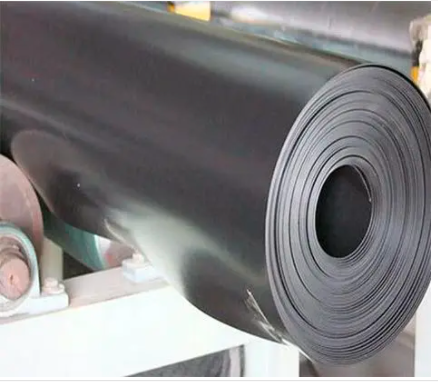- Understanding the Role of Geomembrane Liners in Waste Management
- Innovations in Geomembrane Liners for Water Management
- Geomembrane Liners: A Comprehensive Guide
- The Future of Geomembrane Liners in Civil Engineering
- Geomembrane Liners: Enhancing Landfill Stability
Manager:
WhatsApp:+86 177 0135 2670
Tel:+86 177 0135 2670
Email:marketing@okorder.com
Address:3rd Floor, No.2 Building, No.1 Sanlihe Road
Que es Geomembrana: The Unsung Heroes of Modern Engineering
In the complex world of contemporary technology, few people know “que es geomembrana” (what is a geomembrane), but it represents a major component of our infrastructure. Geomembranes are artificial sheets made generally from materials like HDPE, PVC or LLDPE that function as barriers to fluid and contaminants migration. They are mute guardians protecting the environment and upholding structural integrity.
The Essence of Geomembranes
At their core, geomembranes are more than just plastic sheets; they are the defenders of environmental safety. They have been used in various applications such as lining landfills to constructing impervious barriers for ponds and reservoirs. In essence, a geomembrane’s main purpose is to prevent water seepage and contamination that would otherwise enter into soil and thereby protect groundwater sources and ecosystem.

The Art of Geomembrane Welding
The process of installing geomembranes involves so much; it is an art which needs to be taken with utmost precision. Consequently, welding is an essential step during installation because it makes sure that seams created are as strong as material itself. Just like sewing a quilt, welding can also be compared with this process where every stitch must be firm and well-made so as not to destroy the whole piece.
Welding Techniques: A Symphony of Methods
There are several techniques for welding geomembranes each having its own tools and best practices. The choice between the different methods depends mainly on the type of geosynthetic material being welded or project specifications.
Hot-Air Welding: In this technique hot-air welder is used to heat up surfaces of geombranes softening them before putting them together to form one bond. It works well with all sorts of geosynthetics including PVC, Urethane, HDPE, Polypropylene, LLDPE among others.
Extrusion Welding: Mostly used for HDPE, Polypropylene and LLDPE materials. In this case welding rod is melted and then extruded on the seam developing a strong bond.
Chemical Welding: This method can be applied to PVC and Urethane based geomembranes that are softened by a solvent. It is simple in use but also depends on weather conditions
Wedge-Welding: Wedge welders are hand-held machines that generate heat at the interface point of two overlapped sheets so as to melt them together. It is used for linear extensive welding and cannot be employed when working with complicated shapes.
Field Welding: A Dance with the Elements
In field welding of geomembranes, the welder has to deal with weather elements. If it is too cold for instance, welding process may slow down considerably thus necessitating some additional factors like preheating of geomembrane area before actual welding or making more trial seams.
Testing and Quality Assurance: The Final Curtain Call
Once the welding is over, it becomes necessary to ascertain whether or not the seams were effective. Destructive techniques involve peel tests, shear tests while non-destructive ones include electric leak location (ELL) method etc. Essentially, they should have strong welds without any leaks thereby serving as reliable barriers throughout project lifetime.
Innovations in Geomembranes: The Next Act
The world of geomembranes is constantly changing with new product offerings and techniques to improve efficiency and minimize need for destructive testing. Innovations such as taped geomembrane edges, like AGRU America’s CleanSeam™ technology, help ensure that the sheet remains clean and dry where it is to be welded offering support in modern welding practices.
Conclusion: The Enduring Legacy of Geomembranes
To conclude, geomembranes are the silent guardians of our environment that act as a vital shield against contamination and water infiltration. Welding geomembranes entails a dance 0f finesse, precision, and eco-consciousness. Even as we continue to enhance its process every day, the imprint of this fabric will remain inscribed within the heritage of generations who have secured their environment for flowing spaces after us. It will always be responded to “que es geomembrana?” proudly regarding them as indispensable elements for our constructed universe.
- Previous:The Geomembranes Welder: Mastering the Art of Environmental Protection
- Next:The Hidden Heroes: A Salute to Smooth Geomembranes






